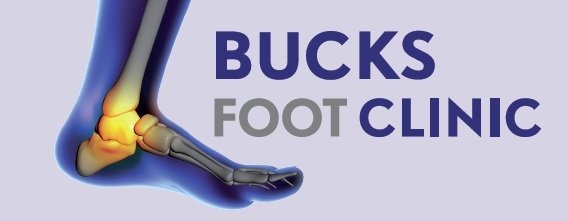Expert Podiatry for Leg Pain Relief | Bucks Foot Clinic
Discover how podiatric care at Bucks Foot Clinic can effectively alleviate hip, knee, and leg pain, enhancing your overall mobility and comfort.
Understanding the Link Between Foot Health and Leg Pain
Your feet provide the foundational support for your entire body. When foot posture is compromised or imbalanced, it can lead to pain not only in your feet but also further up the body, affecting your knees, hips, lower back, shoulders, and overall joint health. At Bucks Foot Clinic, our podiatrists specialise in diagnosing and addressing the root causes of lower limb pain, beginning with foot health.
How Foot Issues Lead to Pain Throughout the Body
Poor foot health and posture can negatively impact various areas of your body, causing:
- Back Pain: Misaligned feet alter your posture, placing unnecessary strain on your lower and upper back.
- Shoulder and Neck Pain: Poor alignment stemming from foot issues can lead to compensatory movements and posture changes, causing strain and tension in shoulders and neck.
- Hip and Knee Pain: Imbalances in foot mechanics can cause misalignment of leg joints, leading to chronic discomfort.
- Joint Degeneration: Long-term poor foot posture increases stress on joints, potentially accelerating wear and tear and leading to conditions like arthritis.
Common foot-related issues leading to pain include:
- Poor Foot Posture: Flat feet or high arches that stress joints throughout the body.
- Overpronation: Excessive inward rolling of the foot affecting knees, hips, and back.
- Incorrect Footwear: Shoes lacking proper support exacerbate posture issues.
- Injury and Overuse: Foot injuries that lead to chronic pain further up the body.
Effective Podiatry Solutions for Pain Management
Bucks Foot Clinic provides specialised podiatric treatments targeting the underlying foot issues causing discomfort throughout the body:
Custom Orthotics
Tailored insoles designed through detailed biomechanical assessments correct foot posture, improving alignment and relieving stress throughout your entire body.
Gait Analysis
Advanced diagnostic tools precisely identify gait abnormalities contributing to widespread pain.
Strengthening and Stretching Programmes
Personalised exercises improve foot and lower limb strength, alleviating pain and enhancing overall body alignment.
Footwear Recommendations
Professional guidance on supportive footwear helps maintain correct foot alignment, reducing pressure on knees, hips, back, and shoulders.
Comprehensive Pain Management
Specialist treatments directly reduce inflammation and manage chronic pain effectively.
Take the First Step Towards Pain-Free Mobility
Experience expert care at Bucks Foot Clinic and effectively manage your hip, knee, leg, back, and shoulder pain through comprehensive podiatric solutions.
Why Choose Bucks Foot Clinic for Lower Limb Podiatry?
Residents from Amersham, Chesham, Little Chalfont, Beaconsfield, and surrounding communities consistently trust Bucks Foot Clinic for:
- Specialised Expertise: Experienced podiatrists skilled in treating complex biomechanical issues.
- Personalised Treatment: Customised care plans tailored specifically to individual needs.
- Advanced Technology: Cutting-edge diagnostic and therapeutic equipment.
- Comprehensive Care: Integrated solutions for complete body alignment and health.
FAQ
1. Can foot problems really cause pain in my back, shoulders, hips, and joints?
Yes, poor foot mechanics often lead to misalignment and pain throughout the body, including the back, shoulders, hips, and joints.
2. Do I need a referral for podiatric treatment for body pain?
No referral is necessary; appointments can be booked directly.
3. How quickly can I see improvements from podiatric care?
Many patients experience significant relief soon after beginning treatment, though recovery timelines can vary.
4. Are treatments painful?
Our podiatric treatments are designed to be comfortable and minimally invasive.
5. Will insurance cover my podiatry treatment?
Many insurers cover podiatric care. Please check with your insurance provider for specifics.
6. Can podiatry prevent future joint and posture issues?
Regular podiatric care significantly reduces the risk of future problems by maintaining proper foot health and body alignment.
7. How often should I visit for follow-up treatments?
Regular visits every 6–12 months are recommended, depending on your condition and treatment plan.







Recent Comments